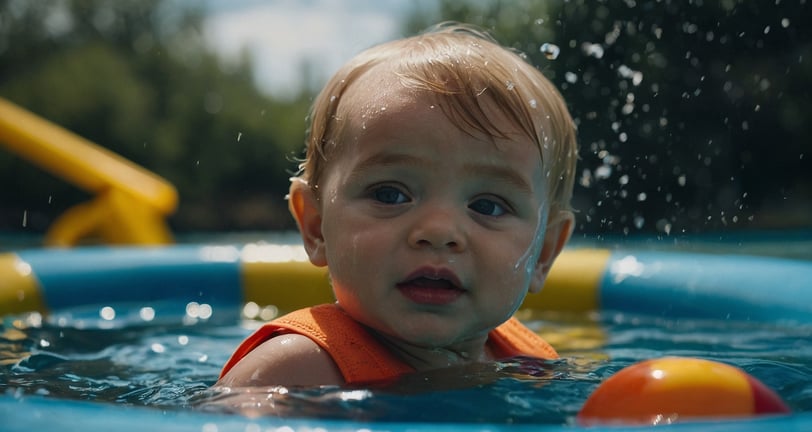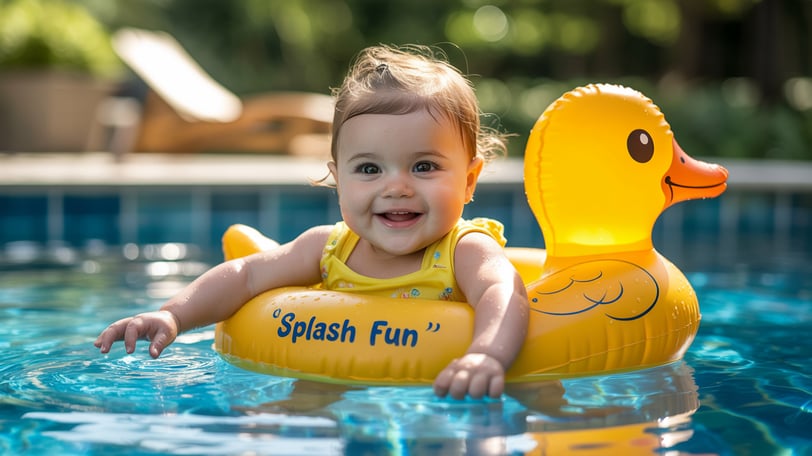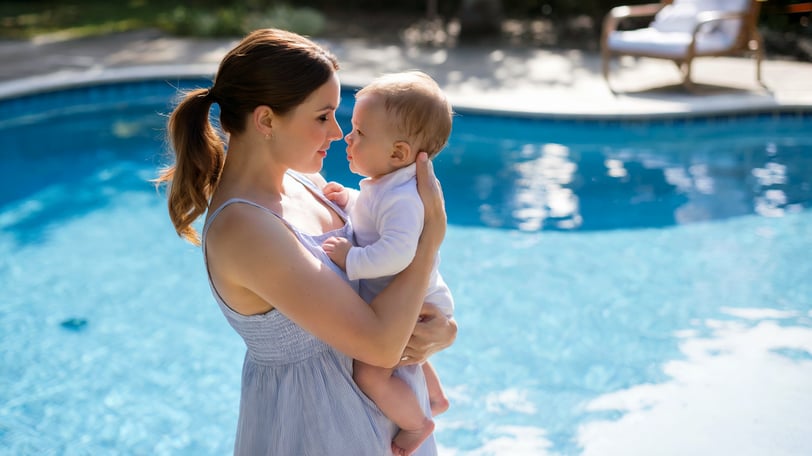Baby Swim Safety: Tips for Introducing Babies to Water
Learn how to safely introduce your baby to water with essential tips for a positive experience from their first splash to confident paddling. Baby swim safety is a top priority, helping build trust, comfort, and fun in every water activity.


Introducing your baby to water can be a joyful and memorable experience, but it's essential to prioritize safety every step of the way. Whether you're planning a poolside adventure or a beach day, understanding how to introduce babies to water safely is crucial. In this guide, we'll provide you with expert tips and practical advice to ensure a positive and secure introduction to swimming for your little one.
Importance of Baby Swim Safety
Water activities offer numerous benefits for babies, including physical development, sensory stimulation, and bonding with caregivers. However, water poses potential risks such as drowning and waterborne illnesses, making safety measures paramount.


When to Start Introducing Babies to Water
Experts recommend introducing babies to water as early as six months old, when they have better head control and coordination. Starting early helps babies become familiar and comfortable with water, laying the foundation for future swimming skills.
Preparing for Baby's First Swim
Before your baby's first swim, take the following steps to ensure a safe and enjoyable experience:
1. Choose the Right Environment
Select a calm and shallow water source for your baby's first swim, such as a baby pool, a designated baby swim area, or a shallow beach with gentle waves. Ensure the water temperature is comfortable, ideally between 85°F to 90°F (29°C to 32°C).
2. Use Appropriate Swim Gear
Invest in swim gear designed for babies, including a properly fitting swim diaper to contain accidents and a comfortable swim outfit that provides sun protection. Additionally, consider using a baby float or a swim vest approved by safety standards to support your baby in the water.
3. Plan the Timing
Choose a time when your baby is well-rested and fed to maximize enjoyment and minimize fussiness. Avoid peak sun hours (10 am to 4 pm) to prevent sunburn and overheating.


Tips for Introducing Babies to Water Safely
1. Start Slowly and Gradually
Begin by gently introducing your baby to water, starting with sitting in shallow water or holding them securely in your arms. Gradually progress to gentle movements such as bouncing or swaying to help them get accustomed to the sensation of water.
2. Support Baby's Head and Neck
Always support your baby's head and neck while in the water, especially if they are not yet able to sit independently. Use one arm under their back and head while the other supports their bottom and legs.
3. Maintain Close Supervision
Never leave your baby unattended in or near water, not even for a moment. Maintain constant eye contact and keep them within arm's reach at all times. Accidents can happen quickly, so stay vigilant.
4. Watch for Signs of Discomfort
Pay attention to your baby's cues and comfort level in the water. If they seem hesitant, anxious, or tired, gently remove them from the water and try again another time. Respect their cues to ensure a positive experience.
5. Practice Basic Water Safety
Teach older siblings and family members to be gentle and respectful around the baby in the water. Encourage them to avoid splashing directly in the baby's face and to understand the importance of water safety rules.
After Baby's First Swim
After your baby's first swim, celebrate their accomplishment and reinforce positive associations with water. Dry them off promptly, apply baby-safe sunscreen if continuing outdoors, and provide fluids to prevent dehydration.
Introducing your baby to water can be an enriching experience that fosters confidence and comfort in aquatic environments. By following these tips and prioritizing safety, you can create enjoyable and memorable moments while ensuring your baby's well-being. Remember, each baby's comfort level in water varies, so approach each experience with patience and positivity. With careful preparation and supervision, you can help your child develop a lifelong love for swimming.
Ensuring Baby's Safety, One Splash at a Time
Navigating your baby's introduction to water doesn't have to be daunting. By starting early, using appropriate gear, and practicing vigilant supervision, you can foster a positive and safe environment for aquatic adventures. Whether it's a backyard pool or a sandy beach, your baby can begin to explore the wonders of water with confidence and joy.
